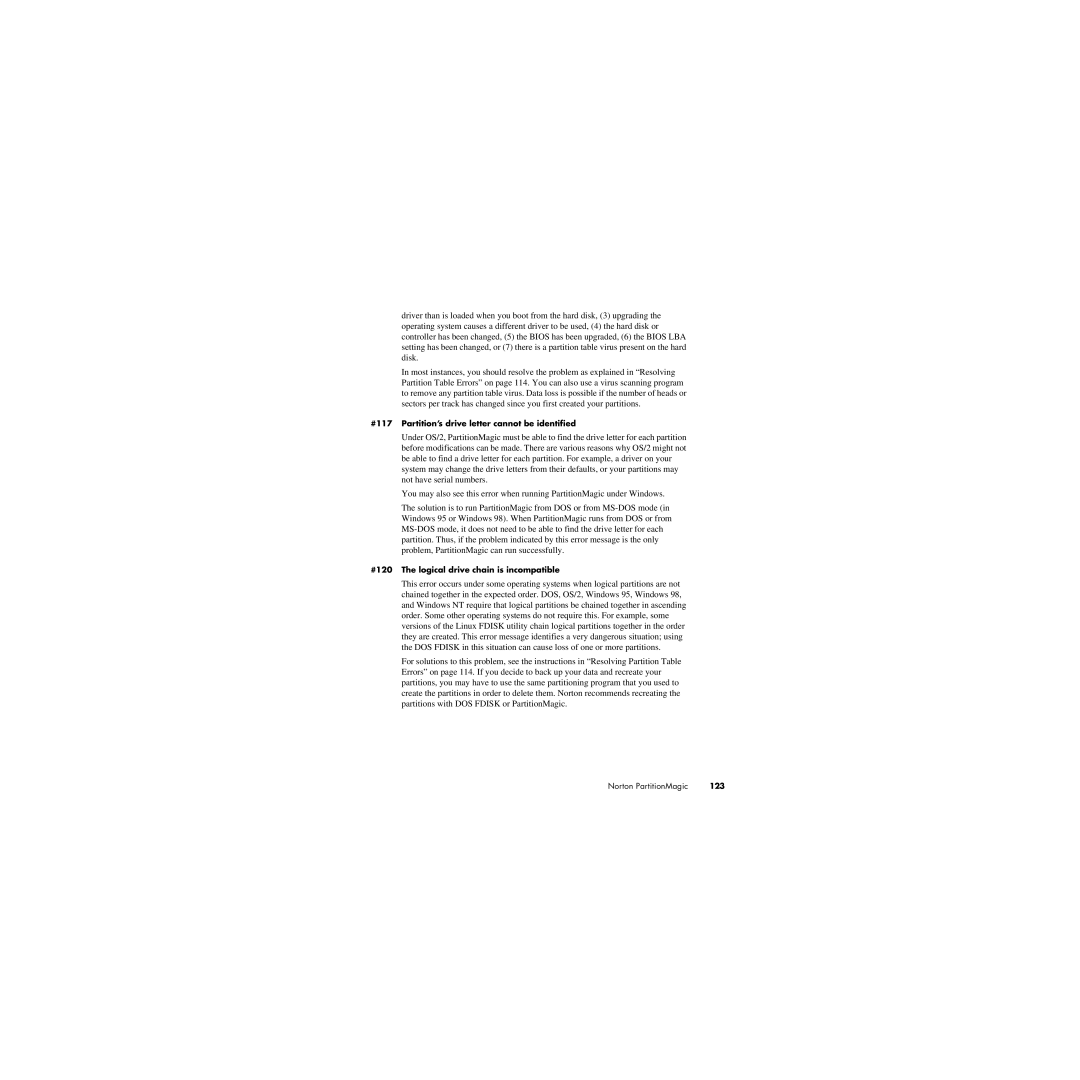driver than is loaded when you boot from the hard disk, (3) upgrading the operating system causes a different driver to be used, (4) the hard disk or controller has been changed, (5) the BIOS has been upgraded, (6) the BIOS LBA setting has been changed, or (7) there is a partition table virus present on the hard disk.
In most instances, you should resolve the problem as explained in “Resolving Partition Table Errors” on page 114. You can also use a virus scanning program to remove any partition table virus. Data loss is possible if the number of heads or sectors per track has changed since you first created your partitions.
#117 Partition’s drive letter cannot be identified
Under OS/2, PartitionMagic must be able to find the drive letter for each partition before modifications can be made. There are various reasons why OS/2 might not be able to find a drive letter for each partition. For example, a driver on your system may change the drive letters from their defaults, or your partitions may not have serial numbers.
You may also see this error when running PartitionMagic under Windows.
The solution is to run PartitionMagic from DOS or from
#120 The logical drive chain is incompatible
This error occurs under some operating systems when logical partitions are not chained together in the expected order. DOS, OS/2, Windows 95, Windows 98, and Windows NT require that logical partitions be chained together in ascending order. Some other operating systems do not require this. For example, some versions of the Linux FDISK utility chain logical partitions together in the order they are created. This error message identifies a very dangerous situation; using the DOS FDISK in this situation can cause loss of one or more partitions.
For solutions to this problem, see the instructions in “Resolving Partition Table Errors” on page 114. If you decide to back up your data and recreate your partitions, you may have to use the same partitioning program that you used to create the partitions in order to delete them. Norton recommends recreating the partitions with DOS FDISK or PartitionMagic.
Norton PartitionMagic | 123 |
